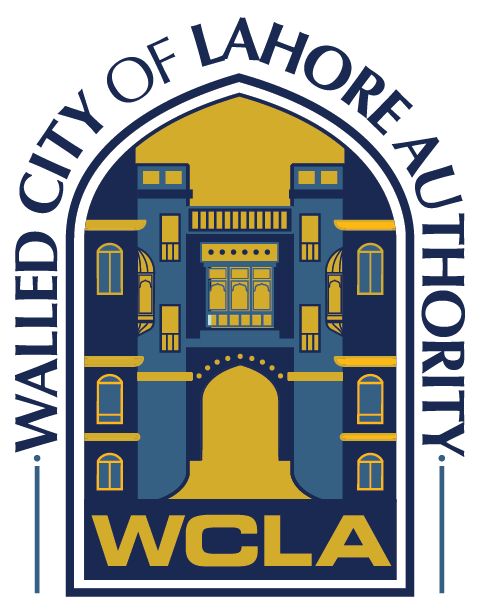GOVERNANCE
PRESS OFFICE
POLICIES
CONTACT US
- On-Going
- Completed
- Future Plans
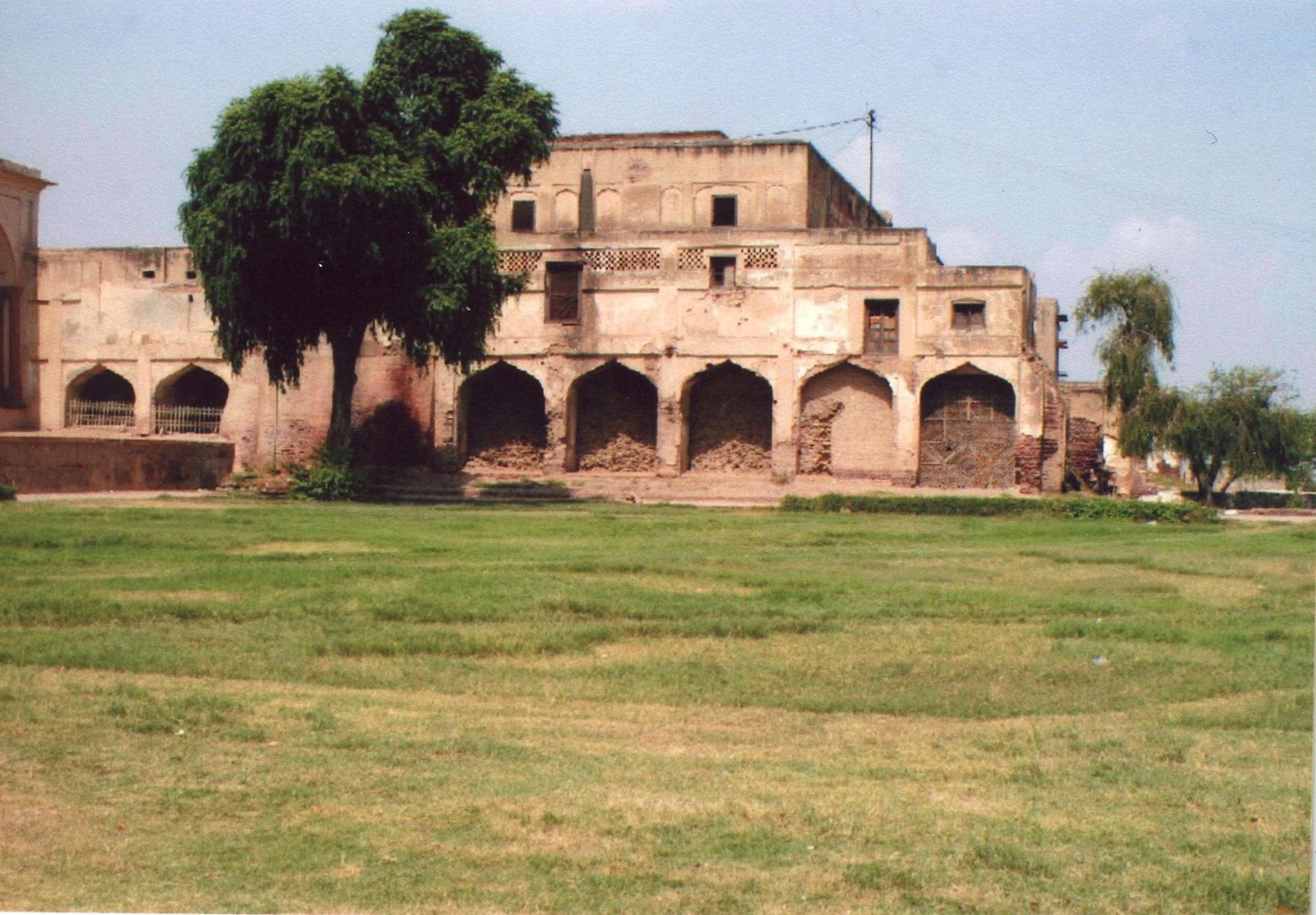 Kharak Singh Haveli is a historical building. This building was built during the reign of Maharaja Kharak Singh, son of Maharaja Ranjit Singh, and it is considered a magnificent mansion of its time. The Walled City of Lahore Authority started the restoration work of Kharak Singh Haveli, which included
Kharak Singh Haveli is a historical building. This building was built during the reign of Maharaja Kharak Singh, son of Maharaja Ranjit Singh, and it is considered a magnificent mansion of its time. The Walled City of Lahore Authority started the restoration work of Kharak Singh Haveli, which included
- Roof repair
- Lime plaster work
- Woodwork
- Brick-laying work
- Interior of Kharak Singh
- Renovation of sitting area
- Multi-functional hall and museum
- Repairs to the ground floor and electrical system are in progress. A library, archival record room and research center will be established in this mansion.
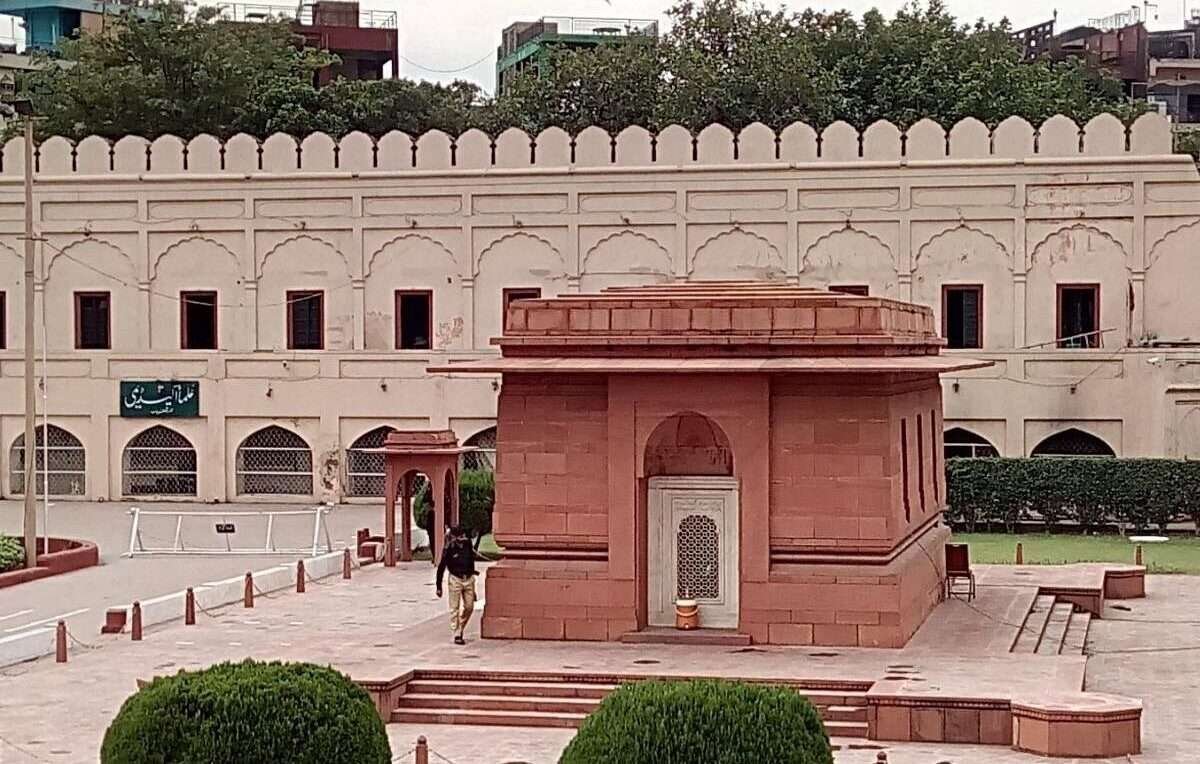 The Punjab Walled Cities and Heritage Authority has commenced conservation efforts at the Mazar e Iqbal complex with the aim of preserving its cultural, historical, architectural, and religious significance. This site is a major tourist destination, attracting visitors around the clock. Some come to honor the renowned poet and say Fatiha, while others are drawn to explore the iconic mosque from the Mughal Period. In line with directives from Chief Minister Punjab, Mr. Mohsin Naqvi, a conservation project has been initiated to restore the beauty of this complex.
The conservation efforts encompassed the uplift of the Allama Iqbal Tomb, preservation and adaptive reuse of the Ulema’s Academy and Hujras situated behind the tomb, establishment of a multipurpose hall within Iqbal’s Academy, and improvement of public amenities. Additionally, the relocation of shoe racks and canteen facilities towards the old Roshnai gate was undertaken.
The details of the conservational works will be as follows;
The red sandstone of Iqbal’s tomb and its floor is going to be changed. The marble jalis of the tomb are being cleaned with chemicals, wooden door of tomb is being repaired. Moreover the water proofing of the roof is being done and also anti termite treatment is being conducted in order to make these conservational work more effective and long term. The last conservation at Iqbals tomb was done Nearly 50 years ago.
Another initiative of this project will be the establishment of Ulema’s Acadmy in the Hujra’s at the back and left of Iqbal tomb. Where currently Rangers quarters exist. Then the provision of a Multi purpose hall is being given here for holding conferences or meetings with a small library.
Furthermore, the current canteen located adjacent to the Mosque gate is being relocated to the vicinity of the old Roshnai gate. Meanwhile, the shoe racks, previously positioned at the Mosque entrance causing congestion, will be moved to the area currently designated as the canteen space. Electrical works for all these projects will be executed with precision, and public toilets will be provided in these areas as well.
This whole project will be completed with the cost of 225,885,539.64 /- Rs. The conservation has been started in January, 2024 and it will be completed till the end of 2024.
The Punjab Walled Cities and Heritage Authority has commenced conservation efforts at the Mazar e Iqbal complex with the aim of preserving its cultural, historical, architectural, and religious significance. This site is a major tourist destination, attracting visitors around the clock. Some come to honor the renowned poet and say Fatiha, while others are drawn to explore the iconic mosque from the Mughal Period. In line with directives from Chief Minister Punjab, Mr. Mohsin Naqvi, a conservation project has been initiated to restore the beauty of this complex.
The conservation efforts encompassed the uplift of the Allama Iqbal Tomb, preservation and adaptive reuse of the Ulema’s Academy and Hujras situated behind the tomb, establishment of a multipurpose hall within Iqbal’s Academy, and improvement of public amenities. Additionally, the relocation of shoe racks and canteen facilities towards the old Roshnai gate was undertaken.
The details of the conservational works will be as follows;
The red sandstone of Iqbal’s tomb and its floor is going to be changed. The marble jalis of the tomb are being cleaned with chemicals, wooden door of tomb is being repaired. Moreover the water proofing of the roof is being done and also anti termite treatment is being conducted in order to make these conservational work more effective and long term. The last conservation at Iqbals tomb was done Nearly 50 years ago.
Another initiative of this project will be the establishment of Ulema’s Acadmy in the Hujra’s at the back and left of Iqbal tomb. Where currently Rangers quarters exist. Then the provision of a Multi purpose hall is being given here for holding conferences or meetings with a small library.
Furthermore, the current canteen located adjacent to the Mosque gate is being relocated to the vicinity of the old Roshnai gate. Meanwhile, the shoe racks, previously positioned at the Mosque entrance causing congestion, will be moved to the area currently designated as the canteen space. Electrical works for all these projects will be executed with precision, and public toilets will be provided in these areas as well.
This whole project will be completed with the cost of 225,885,539.64 /- Rs. The conservation has been started in January, 2024 and it will be completed till the end of 2024.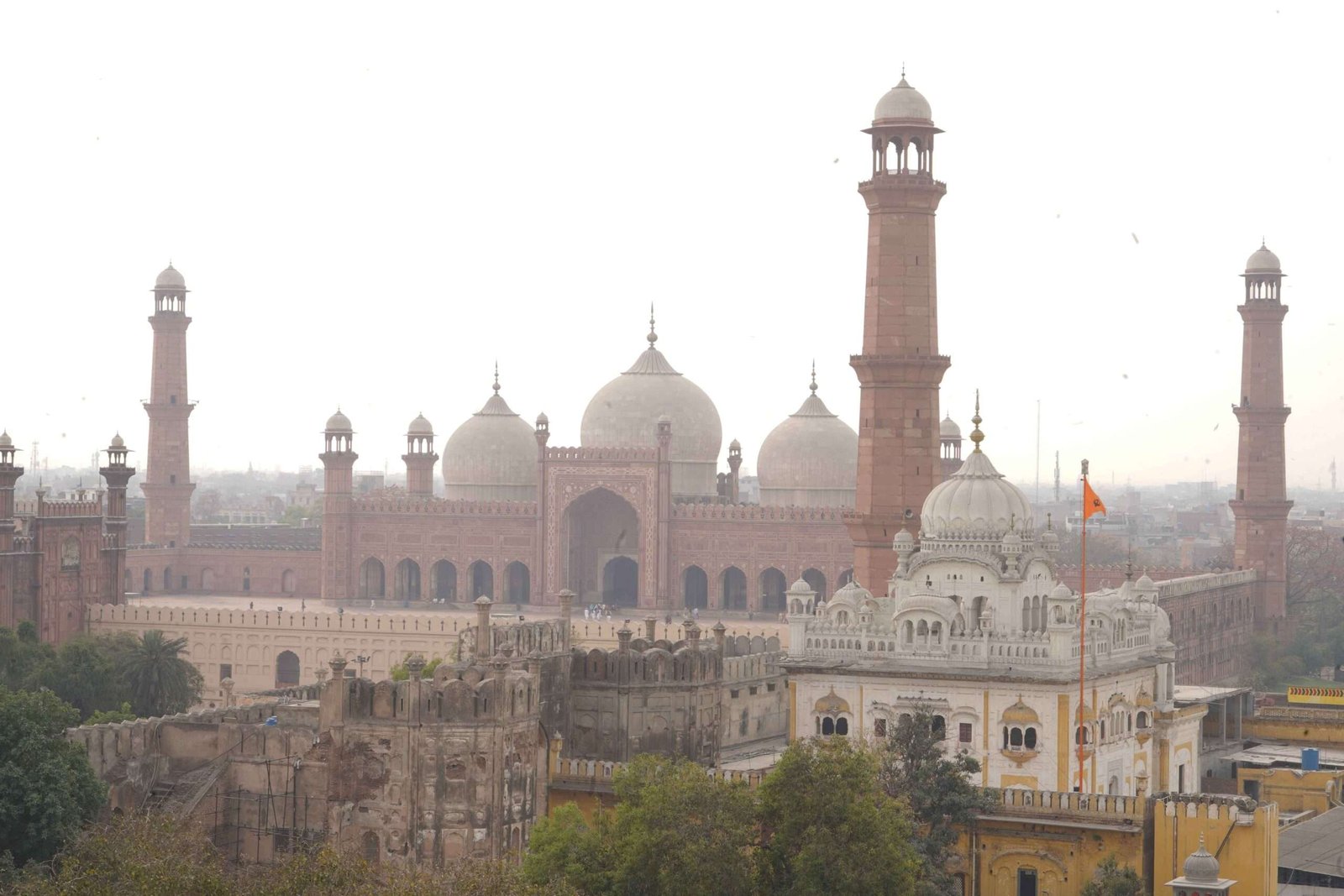 The Walled City of Lahore Authority has initiated the restoration and renovation work of the Badshahi Mosque. This project was commenced in December 2022 and is estimated to cost approximately 35 million rupees. It is expected to be completed 2024.
The Badshahi Mosque, constructed during the Mughal era, is celebrated for its historical significance. This mosque is recognized as a living testament to royal grandeur, magnificence, and glory, symbolizing the religious and cultural heritage of the region.
The Badshahi Mosque is an iconic Mughal-era congregational mosque in Lahore, Punjab, Pakistan. The mosque is located opposite of Lahore Fort in the outskirts of the Walled City and is widely considered to be one of Lahore's most iconic landmarK
The Badshahi Mosque was built between 1671 and 1673 and by the Mughal emperor Aurangzeb. The mosque is an important example of Mughal architecture, with an exterior that is decorated with carved red sandstone with marble inlay. It remains the largest mosque of the Mughal-era, and is the third-largest mosque in Pakistan. In 1799, during the rule of Ranjit Singh of the Sikh Empire, the mosque's courtyard was used as a stable and its hujras (cells) as soldiers quarters. When the British Empire took control of Lahore in 1846 it was used as a garrison until 1852. Subsequently, the Badshahi Mosque Authority was established to oversee its restoration as a place of worship. It is now one of Pakistan's most iconic sights.
The Government of Punjab has assigned the task of restoration and renovation of the Badshahi Mosque to the Punjab Walled Cities and Heritage Authority. This includes the restoration of the internal gate (Deodi), reconstruction of the rear chamber, and waterproofing of the roofs. It serves as a cultural heritage site and a center for tourism and recreation for both local residents and international tourists. The Badshahi Mosque, established during the Mughal era, is renowned for its historical significance, representing the grandeur of the Mughal period and serving as a representation of the cultural heritage of the region
The Walled City of Lahore Authority has initiated the restoration and renovation work of the Badshahi Mosque. This project was commenced in December 2022 and is estimated to cost approximately 35 million rupees. It is expected to be completed 2024.
The Badshahi Mosque, constructed during the Mughal era, is celebrated for its historical significance. This mosque is recognized as a living testament to royal grandeur, magnificence, and glory, symbolizing the religious and cultural heritage of the region.
The Badshahi Mosque is an iconic Mughal-era congregational mosque in Lahore, Punjab, Pakistan. The mosque is located opposite of Lahore Fort in the outskirts of the Walled City and is widely considered to be one of Lahore's most iconic landmarK
The Badshahi Mosque was built between 1671 and 1673 and by the Mughal emperor Aurangzeb. The mosque is an important example of Mughal architecture, with an exterior that is decorated with carved red sandstone with marble inlay. It remains the largest mosque of the Mughal-era, and is the third-largest mosque in Pakistan. In 1799, during the rule of Ranjit Singh of the Sikh Empire, the mosque's courtyard was used as a stable and its hujras (cells) as soldiers quarters. When the British Empire took control of Lahore in 1846 it was used as a garrison until 1852. Subsequently, the Badshahi Mosque Authority was established to oversee its restoration as a place of worship. It is now one of Pakistan's most iconic sights.
The Government of Punjab has assigned the task of restoration and renovation of the Badshahi Mosque to the Punjab Walled Cities and Heritage Authority. This includes the restoration of the internal gate (Deodi), reconstruction of the rear chamber, and waterproofing of the roofs. It serves as a cultural heritage site and a center for tourism and recreation for both local residents and international tourists. The Badshahi Mosque, established during the Mughal era, is renowned for its historical significance, representing the grandeur of the Mughal period and serving as a representation of the cultural heritage of the region

The Diwan-e-Khas (hall of private audience) served as the place where the Mughal emperors received courtiers and state guests and in the Lahore Fort. It was built by Governor Lahore Wazir Khan for Shah Jahan in 1645
In contrast to the Diwan-e-Aam, the Diwan-e-Khas was a site of elaborate pageantry with hour long processions occurring before each audience session.
It is the only baara dari located in the fort which stands on dazzling pillars
The Walled City of Lahore Authority (WCLA) started work on the renovation of this project on November 18, 2019, which completed on November 17, 2021. Cost of this project is 32,072,583 Rupees.
List of repair and restoration works
- Strengthening of the structure
- Addition of steel pins and steel plates to strengthen the roof
- Replacement of missing marble with new marble
- Removal of graffiti and adverts from walls
- Putting up signboards where needed
- Restoration of flooring
- Creating paved pathways for tourists
- Fixing the artificial lighting of the building
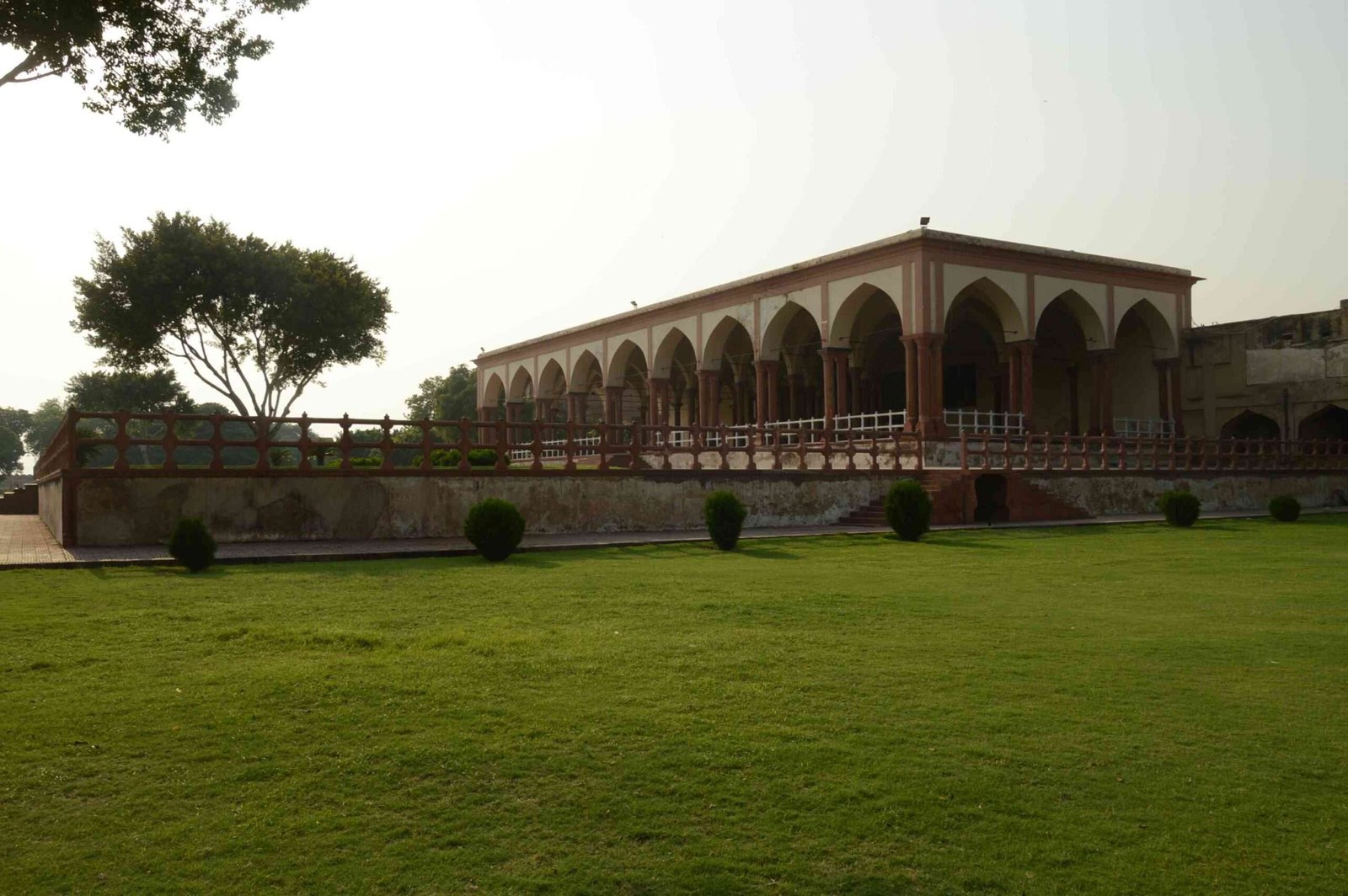 The Diwan-e-Aam was built by Shah Jahan in 1628 in a prominent part of the fort towards the immediate South of Jahangir's Quadrangle.
It was built style of a Chehel Satoun -- a Persian style 40-pillar hall, a style similar to the Diwan-e-Aam at the Agra Fort.
The Diwan-e-Aam was used as a hall for the emperors to hold audience with commoners for listening to their grievances, an act that mirrors the relationship between the emperor and people.
The marble jharoka or the throne gallery projecting from its rear wall and there the emperor would sit with his royal protocol, is now accessible to all tourists. Stepping up there one can imagine the grandeur and aura of the old days, especially the scene of the Mughal darbar.
It is a double storey structure and on the second floor you can see beautiful cusped marble arches which present a mesmerising view of the Jahangir’s Quadrangle. This building remained in use till the time of Jahangir.
In 1841, the Diwan-e-Aam was destroyed when the son of Maharaja Ranjit Singh, Sher Singh, bombarded the fort in his fight against Maharani Chand Kaur, the wife of Mahraja Kharak Singh.
The current structure was built by the British in the 1849 after their victory against the Sikhs.
The Walled City of Lahore Authority (WCLA) started work on the renovation of this building on December 2, 2019, and the project completed on December 1, 2021. . cost of this project is 60 , 866,126.06 Rupees.
List of repair and restoration works
The Diwan-e-Aam was built by Shah Jahan in 1628 in a prominent part of the fort towards the immediate South of Jahangir's Quadrangle.
It was built style of a Chehel Satoun -- a Persian style 40-pillar hall, a style similar to the Diwan-e-Aam at the Agra Fort.
The Diwan-e-Aam was used as a hall for the emperors to hold audience with commoners for listening to their grievances, an act that mirrors the relationship between the emperor and people.
The marble jharoka or the throne gallery projecting from its rear wall and there the emperor would sit with his royal protocol, is now accessible to all tourists. Stepping up there one can imagine the grandeur and aura of the old days, especially the scene of the Mughal darbar.
It is a double storey structure and on the second floor you can see beautiful cusped marble arches which present a mesmerising view of the Jahangir’s Quadrangle. This building remained in use till the time of Jahangir.
In 1841, the Diwan-e-Aam was destroyed when the son of Maharaja Ranjit Singh, Sher Singh, bombarded the fort in his fight against Maharani Chand Kaur, the wife of Mahraja Kharak Singh.
The current structure was built by the British in the 1849 after their victory against the Sikhs.
The Walled City of Lahore Authority (WCLA) started work on the renovation of this building on December 2, 2019, and the project completed on December 1, 2021. . cost of this project is 60 , 866,126.06 Rupees.
List of repair and restoration works
- Lime plaster
- Repair work of roof
- Floor repair and maintenance
- Strengthening of structure
- Woodworking
- Stone work
- Termite prevention
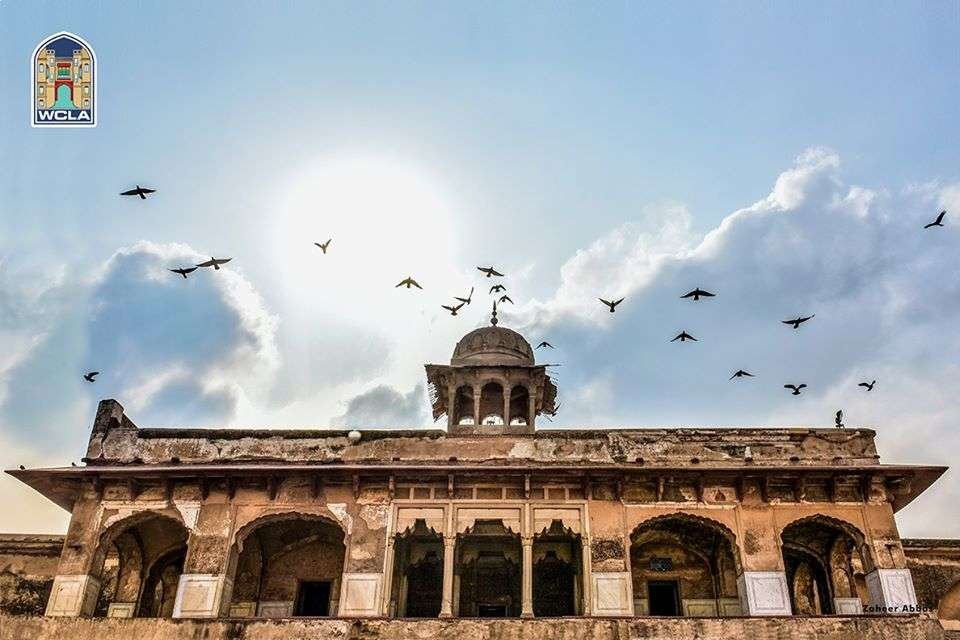 This hall of public and private audience was built in the Akbar era. It includes a Jharoka supported with four brackets of red sand stone. The interior of the double storey structure is decorated with exquisite stucco tracery of geometric designs and floral designs.
The decorative motifs were originally gilded and the traces of gold are still visible at various places
The most magnificent part of the building which is at the backside of the Diwan-e-Aam, is the jharoka where the emperor would sit to meet his courtiers. The building also has beautiful cusped marble arches/niches in different chambers.
Similarly, the pata of the big room’s walls are decorated with a strip of marble with black and yellow geometric and miniature drawings.
The Walled City of Lahore Authority (WCLA) started renovation on this project on December 2, 2019, and completed on December 1, 2021.
List of repair and restoration works
This hall of public and private audience was built in the Akbar era. It includes a Jharoka supported with four brackets of red sand stone. The interior of the double storey structure is decorated with exquisite stucco tracery of geometric designs and floral designs.
The decorative motifs were originally gilded and the traces of gold are still visible at various places
The most magnificent part of the building which is at the backside of the Diwan-e-Aam, is the jharoka where the emperor would sit to meet his courtiers. The building also has beautiful cusped marble arches/niches in different chambers.
Similarly, the pata of the big room’s walls are decorated with a strip of marble with black and yellow geometric and miniature drawings.
The Walled City of Lahore Authority (WCLA) started renovation on this project on December 2, 2019, and completed on December 1, 2021.
List of repair and restoration works
- Lime plaster
- Repair work of roof
- Floor repair and maintenance
- Strengthening of structure
- Fresco work
- Electric wiring and installation of lights
- Ghalib Kaari
- Manbat Kaari
 Moti Masjid or the Pearl Mosque is a 17th-century religious building located inside the Lahore Fort.
The small, white marble structure was built in 1645 by Mughal Emperor Jahangir and modified in Shah Jahan’s time. The mosque is located on the Western side of Lahore Fort, close to the Alamgiri Gate.
The mosque, which was built for the ladies of the royal harem, was named Moti Masjid because of its pearl like colour, dome and size.
According to historical references, this mosque was built at the same time as the Dolat Khana-e-Khas-o-Aam literally translated as ‘The Special and Common Treasury’ as the two structures are very close to each other.
The Walled City of Lahore Authority (WCLA) started the building’s renovation on November 18, 2019, and the project completed on 2021. Cost of this project is 19,324,758,.0.
List of repair and restoration works
Moti Masjid or the Pearl Mosque is a 17th-century religious building located inside the Lahore Fort.
The small, white marble structure was built in 1645 by Mughal Emperor Jahangir and modified in Shah Jahan’s time. The mosque is located on the Western side of Lahore Fort, close to the Alamgiri Gate.
The mosque, which was built for the ladies of the royal harem, was named Moti Masjid because of its pearl like colour, dome and size.
According to historical references, this mosque was built at the same time as the Dolat Khana-e-Khas-o-Aam literally translated as ‘The Special and Common Treasury’ as the two structures are very close to each other.
The Walled City of Lahore Authority (WCLA) started the building’s renovation on November 18, 2019, and the project completed on 2021. Cost of this project is 19,324,758,.0.
List of repair and restoration works
- Lime plaster and lime wash
- Repair work to avoid water seepage
- Improvement of the drainage system
- Floor restoration
- Filling and strengthening the cracks in the marble
- Termite prevention
- Maintenance of domes and strengthening of structure
- Marble cleaning
- Arrangement of lights in the building
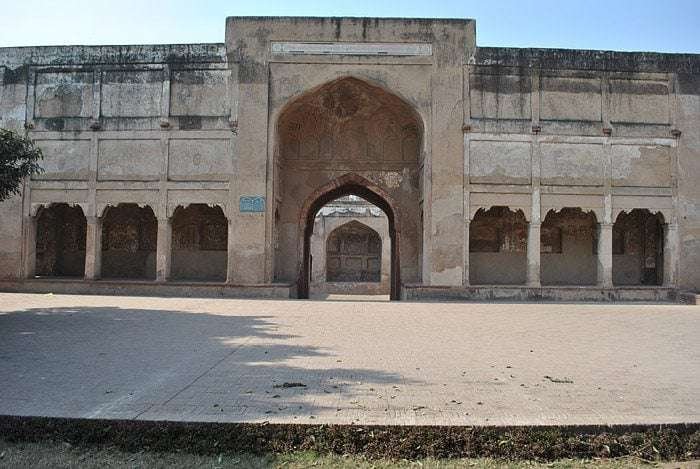 The Maktab Khana (Clerk's Quarters), originally known as Dawlat Khana-e-Jahangir, was constructed in 1617 under the supervision of Mamur Khan during the reign of emperor Jahangir as a set of cloisters right near to the Moti Masjid.
Designed by Khawaja Jahan Muhammad Dost, it was used as passage to the Audience Hall from the palace buildings to the north
Clerks in the Maktab Khana would record the entry of guests into the fort.
The Walled City of Lahore Authority (WCLA) started work on the renovation of this structure on November 18, 2019, and the project completed on November 17, 2021. Cost of this project is19, 324,758,.0.
List of repair and restoration works
The Maktab Khana (Clerk's Quarters), originally known as Dawlat Khana-e-Jahangir, was constructed in 1617 under the supervision of Mamur Khan during the reign of emperor Jahangir as a set of cloisters right near to the Moti Masjid.
Designed by Khawaja Jahan Muhammad Dost, it was used as passage to the Audience Hall from the palace buildings to the north
Clerks in the Maktab Khana would record the entry of guests into the fort.
The Walled City of Lahore Authority (WCLA) started work on the renovation of this structure on November 18, 2019, and the project completed on November 17, 2021. Cost of this project is19, 324,758,.0.
List of repair and restoration works
- Lime plaster and lime wash
- Repair work to avoid water seepage
- Improving the drainage system
- Floor restoration
- Filling and strengthening the cracks in the marble
- Termite prevention
- Maintenance of domes and strengthening of structure
- Marble cleaning
- Arrangement of lights in the building
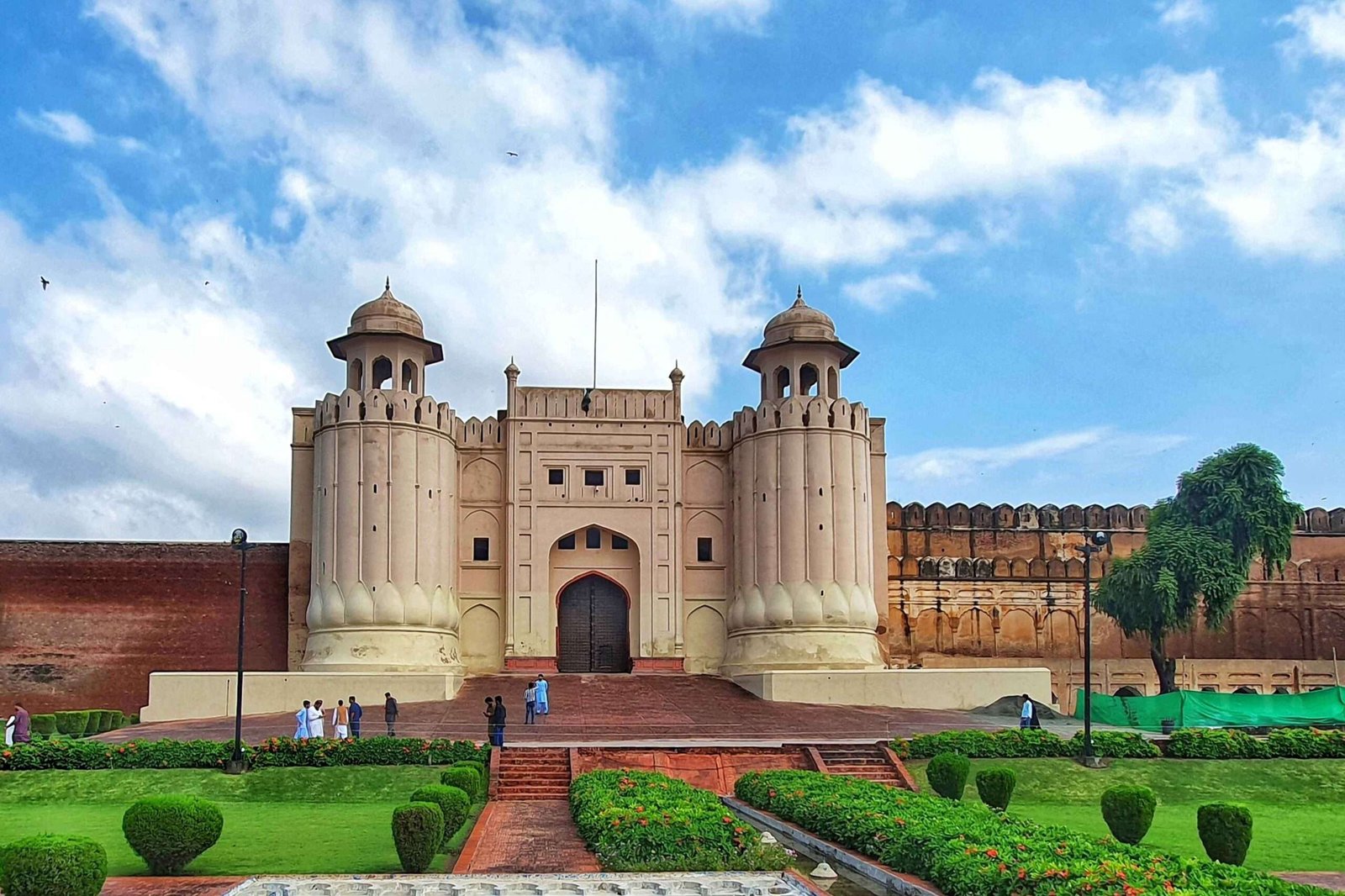
Located at the Western end of the fort, the Alamgiri Gate is the entrance of the Lahore Fort which opens to the Hazuri Bagh and faces the Badshahi Mosque.
The gate is one of Lahore's most iconic monuments built by Mughal emperor Aurangzeb Alamgir in 1674. It has two semi-circular bastions where lotus petal design adorns its base. Through its wide arched entrance, the king would enter the fort on his elephants.
The gate was once famously featured on Pakistani currency. The Walled City of Lahore Authority (WCLA) started work on the renovation of this structure on October 28, 2019, and the project completed on October 27, 2020.
List of repair and restoration works
- Strengthening the structure
- Lime plaster and lime wash
- Repair of wooden door
- Repair work to avoid water seepage
- Termite prevention
- Restoration of fresco work
- Arrangement of lights and installation of cameras in the building
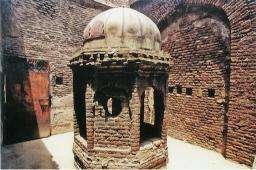
Inside the Alamgiri Gate, there is a temple which is famously known to be the temple of Raja Loh, who according to Hindu religion was the son of Rama and Sita.
It is argued that the historic city of Lahore was founded by none other than Loh.
Conservational works at Temple of Loh are being carried out by Aga Khan Cultural Service Pakistan In collaboration with WCLA with financial assistance from US-Ambassadors Fund for Cultural Preservation. Conservation started in 2019, and the project will be completed till the end of 2024.
List of repair and restoration works
- Strengthening the structure
- Lime plaster and lime wash
- Repair of wooden door
- Repair work to avoid water seepage
- Termite prevention
- Restoration of fresco work
- Arrangement of lights and installation of cameras in the building
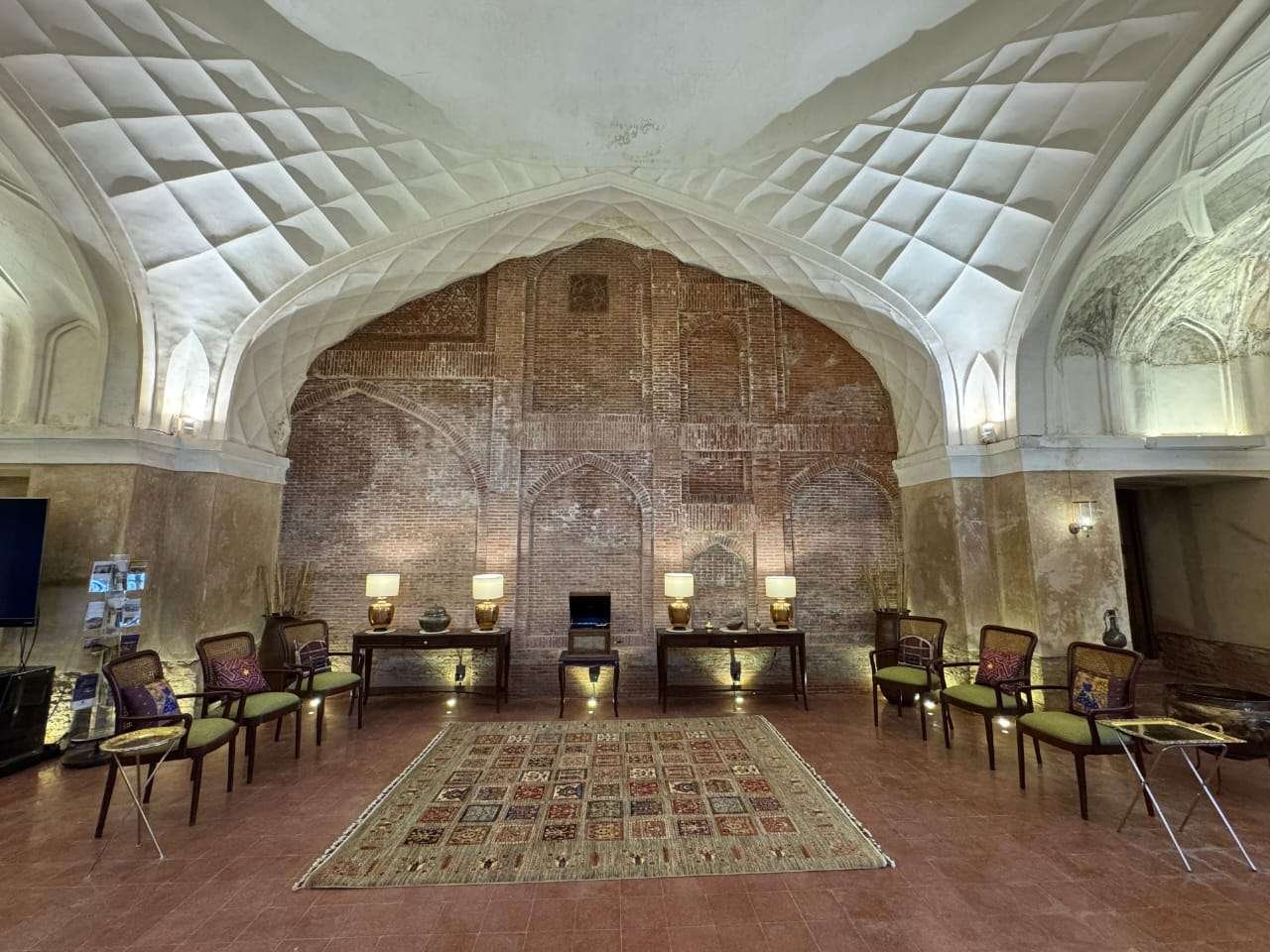 Arz Gah is a Mughal period building located alongside the Picture Wall, behind the Diwan-e-Khaas. It was the place where the Omra, or nobles of the royal court, gathered in the morning to receive the Emperor’s commands.
In the Sikh period map, this building is referred to as Arz Gah, while British travelers called it the Arz Begi, a term denoting an officer who would read letters and petitions to the King. The building had been in a dilapidated condition for many years and was used as a warehouse. Thanks to the efforts of the Walled City of Lahore Authority to preserve the site and highlight its historical importance, the repair and restoration work of the Arz Gah completed in 2024.
The conservation project for this building, costing Rs. 2,882,688, includes various works such as
Arz Gah is a Mughal period building located alongside the Picture Wall, behind the Diwan-e-Khaas. It was the place where the Omra, or nobles of the royal court, gathered in the morning to receive the Emperor’s commands.
In the Sikh period map, this building is referred to as Arz Gah, while British travelers called it the Arz Begi, a term denoting an officer who would read letters and petitions to the King. The building had been in a dilapidated condition for many years and was used as a warehouse. Thanks to the efforts of the Walled City of Lahore Authority to preserve the site and highlight its historical importance, the repair and restoration work of the Arz Gah completed in 2024.
The conservation project for this building, costing Rs. 2,882,688, includes various works such as
- Dismantling the decayed kankar lime terraced flooring and installing a new terraced floor
- restoring Ghalib Kari
- consolidating cracks
- waterproofing the roof
- Washroom facility.
The Future Plans Will Available Soon....
Trending Stories And Another Stories
On-Going
Kharak Singh Haveli is a historical building. This building was built during the reign of Maharaja Kharak Singh, son of Maharaja Ranjit Singh, and it is considered a magnificent mansion of its time. The Walled City of Lahore Authority started the restoration work of Kharak Singh Haveli, which included
- Roof repair
- Lime plaster work
- Woodwork
- Brick-laying work
- Interior of Kharak Singh
- Renovation of sitting area
- Multi-functional hall and museum
- Repairs to the ground floor and electrical system are in progress. A library, archival record room and research center will be established in this mansion.
The Walled City of Lahore Authority is swiftly working on the restoration of Kharak Singh Haveli, started in April 2023, with an estimated cost of 9 crore rupees. The project is expected to be completed by 2024. Director-General of the Walled City Authority, is keen on preserving the national heritage in its original form.
